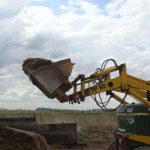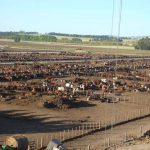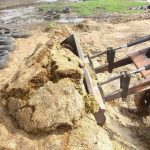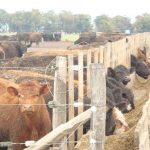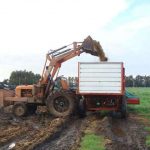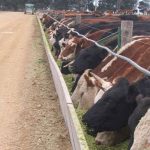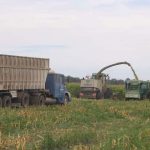Removal and Supply
The size and the removal rate of the prepared silo will have to be in direct relation with the number of cows to be fed.This implies planning beforehand.
The width and height of the silo will be determined by the number of animals and the amount of ensiled forage crops the animals eat; in this way, the losses are reduced.
At the feed out stage, it is fundamental to minimize the exposure of material to oxygen and to avoid its spoilage.
The following factors have to be taken into account:
Management of the face of the silo Bridge: the silo should be removed from the top downwards and from one side to the other, the removal rate should be even (leaving a smooth side and advancing 50 cm per day), the exposed face should be removed in one or two days at the latest,and the feeding spoilage must be discarded.
Management of the bag: the bag is torn off in the inferior part, the opening should be quite wide in order to handle it better; the spoiled feeding part should be removed, the bag should be cut every 5 to 7 days, it should be taken away from the field and the holes in the bag should be patched.
Distribution: all animals should receive the same amount of ration, the producer should feed his animals at the same time each day, he should make a homogeneous distribution, and little should be spilled outside the feeding trough.
Management of the feeding troughs: for cows, there should be 50 t0 60 cm per animal (for middle sized cows 30 to 40 cm); the width of the feeding troughs should not be less than 1m ( in this way, waste is avoided), the producer should be able to “read” the feeding troughs correctly.
The feeding troughs should be cleaned every 3 or 4 days
and no spoiled material should be left in them.

